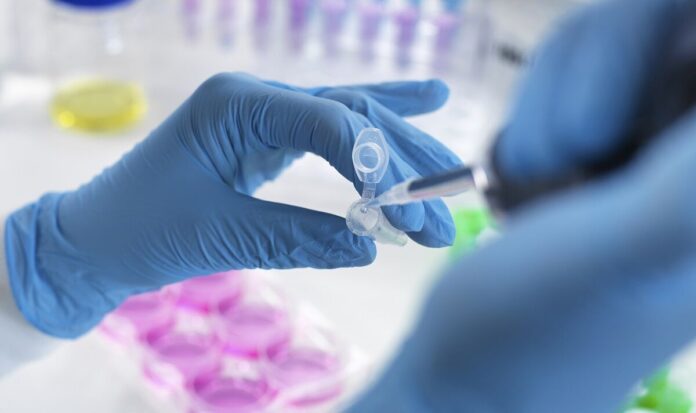A ‘cellular fingerprint’ may soon allow doctors to predict who is at risk of cancer (Image: Getty Images) A ‘cellular fingerprint’ may soon allow doctors to predict who is at risk of cancer — before the devastating disease takes hold. This is the conclusion of researchers from Yale University, who have managed to isolate a so-called DNA methylation signal dubbed CellDRIFT that is linked to both cancer and ageing. DNA methylation is a biological process in which molecules are added to DNA to prevent the transcription of the genetic material and thus control gene expression. The team found that CellDRIFT levels are not only higher in ageing and cancerous cells, but also in healthy tissues from patients with cancer. The finding confirms that there is more to cancer risk than just bad luck — as has been suggested previously — and may be able to reveal personal risk ahead of tumour formation. DNA methylation is a process in which molecules are added to DNA to gene control expression (Image: Getty Images) The study was undertaken by experimental pathologist Dr Christopher Minteer of Yale University and his colleagues. By analysing tissue samples, the researchers found that CellDRIFT is more common in ageing tissues, cancerous tissues and even normal tissues taken from patients with cancer. Dr Minteer said: ‘We found that we could quantify age as more than just a number.’ Experts have calculated that cancer risk increases with age — with the chance of developing the disease skyrocketing by 4,000 percent between the ages of 25 and 65. The team’s new work builds on a couple of previous studies. The first, published in the journal Science back in 2015, explored the relationship between the risk of cancer and the type of tissue involved. In particular, the team in that study were looking to determine if higher incidences of cancer might be explained by the rates at which stem cells divide in the affected tissues. Dr Minteer explained: ‘They were interested in the idea that the longer we live, the more years we have to accumulate potential ‘bad luck events’ that could be drivers toward an outcome over time.’ This notion — which concerned the random and thus hard-to-predict mutations that drive cancer risk — became known to pathologists as the ‘bad luck hypothesis’. However, Dr Minteer and his colleagues at Yale suspected that an individual’s risk of cancer involves other factors beyond just simple bad luck. Their new study supported that idea. Dr Minteer said the findings give hope we could ‘assay some level of risk prior to disease’ (Image: Getty Images) To investigate further, the team started to look at measurable environmental influences that could increase the risk of cancer — including, in 2022, a study of how DNA methylation changes as we age. Building on that work, their latest investigation involved an exploration of how we might model these epigenetic changes. To do this, Dr Minteer and his colleagues cultured cells from the brain known as astrocytes, which are the principal component of our central nervous system. The researchers then modified some of these cells by inducing a gene called human telomerase reverse transcriptase — or hTERT for short. hTERT has the effect of making cells essentially immortal by lengthening the protective caps on the end of chromosomes, allowing ageing cells to continue to divide indefinitely, much like the uncontrolled growth of tumour cells in cancer. Over the course of three months, the team took samples of cells from their cultures and extracted the cell’s DNA for analysis. Dr Minteer said: ‘We were able to show that we can isolate a signal that is associated with ageing and also is known to be important in cancer.’ This signal was CellDRIFT. Next, the team turned to clinical tissues — of the breast, colon, lung, pancreas and thyroid — and showed that cancerous tissues have a larger CellDRIFT signal than comparable tissues taken from healthy patients. Focussing on a group of patients with breast cancer, the researchers found that CellDRIFT is positively correlated with poorer health outcomes, meaning the DNA methylation signal could be used to predict how aggressive a cancer is. Further to this, however, the team also found that CellDRIFT signals are larger in healthy tissue samples taken more than an inch away from the patient’s tumours. Dr Minteer concluded: ‘This gives us some hope that we could perhaps assay some level of risk prior to disease.’ The full findings of the study were published in the journal Science Advances .


